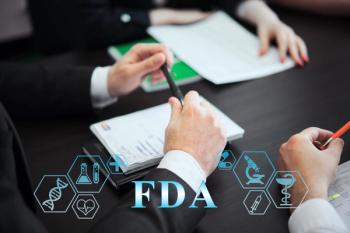
Q&A With Derron Stark, Managing Director of Strategy and Transactions at EY
Stark discusses pharma’s supply chain and the issues it is facing.
Pharmaceutical Executive: What are the current vulnerabilities in the supply chain for the pharma industry?
Derron Stark: It's really the same for any industry. Geopolitical disruptions, like the war in Ukraine, have created shortages of certain key raw materials that are used in pharmaceutical manufacturing processes and those have to be sourced from other places. Then there are unique problems like the limitation on transportation truck drivers in Europe (because a lot of Ukrainians serve those roles) and energy insufficiency (because of the reliance of certain parts of Europe on Russian energy), there were certain suppliers within the pharma industry that were significantly constrained until they could overcome those problems. We've also seen cyber security play a significant role in disruption in the industry over the years and those are only going to increase. Extreme weather from climate change has disrupted various parts of the US and Europe, which has caused issues with the ability to transport effectively. Then there's always the black swan events that you don't know when they're going to happen but you have to be prepared for and have the ability to respond quickly (like to the Suez Canal issue). We had clients that had shipments that were trapped during that incident, and they had to find alternate product to ship via alternate routes to their customers until that issue was resolved.
PE: It sounds like a lot of big picture issues.
Stark: Ultimately, the big picture issues drive down to the small picture issues. The pandemic created a lot of disruption because China was in lock down for large periods. Then India was restricting exports because they were prioritizing their internal markets. Both China and India represent a significant portion of upstream raw material supplied to the pharma industry, so that had a longer-term effect. Ultimately, the pharma industry was resilient in its ability to respond to those challenges, but they do recognize that going forward there's going to be more of those challenges. They can't rely solely on inventory any longer to ensure resilience. They need to do other things to make those points change resilient and responsive.
PE: What are some examples of things companies the pharma industry can do to make the supply chain more resilient?
Stark: We've been working with clients and industry groups that focus on these issues. The number one lever that everyone is investing in right now is end-to-end supply chain visibility. It's ultimately some total collection of technology, process, and governance to have enhanced visibility to up-and-down stream supply chains. A goal is to be able to better respond to the signals that you're getting from that technology and then having the processes to respond to it effectively. This isn't a new topic, I've been in the industry for 30 years and I've been in the strategy component or area focused on the supply chain for 20 years. We’ve had tools all along, but what has changed is those tools are now more robust and easier to implement. We still haven't fully solved the problem, however, of getting information about aspects of the supply chain and then knowing what to do and how to act on that information.
How can new technology give me insights of what I should do without having to figure it out on my own necessarily. AI might be a tool to do that, but I don't think we've fully found the solution to that use case yet.
PE: How does the supply chain create prediction and response challenges?
Stark: Let's use the Suez Canal example. The fact that I have visibility through a tool that tells me that you know the actual location of my shipment is in a container with X number of lots of material in the Suez Canal, this creates a situation where I know I have a problem, but what I really need are predictive options for how to respond. For example, I have X number of the same product in a warehouse located within the proper proximity to fulfill the orders that are related to those products, and I can shift the supply to a different carrier. Or I have an option to source from a different supplier and I would only delay my fulfillment response by five days. Instead of my planner having to go dig that up, if we have you know a predictive solution built into the process that could give that information right off the bat. That just increases the response time, which is one of our measures of resilience. It’s the same for upstream visibility. If we were monitoring risk and disruption in our inbound suppliers for material shipments, component shipments, or whatever that might be, and I get an alert that warned me that there might be a disruption, it provides me with a set of options. This could range from presenting a number of qualified alternate suppliers for that component or showing that there is a pending regulatory approval on an alternative source and that's going to be the X number of months of approval.
Newsletter
Lead with insight with the Pharmaceutical Executive newsletter, featuring strategic analysis, leadership trends, and market intelligence for biopharma decision-makers.





